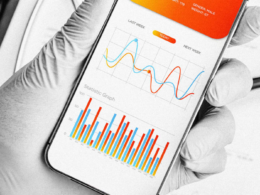This is an excerpt of the article below, focused on the topic above, preceded by an Executive Summary, by the author of the blog.
Getting Buy-In for Predictive Analytics in Health Care
Harvard Business Review
by Meetali Kakad, MD, Ronen Rozenblum, David Westfall Bates, MD
June 20, 2017
Executive Summary
by Joaquim Cardoso MSc.
Chief Editor of “The Health Strategy Foundation Blog”
@ The Analytics Informed Health Care Institute
March 15, 2022
What is the problem?
- According to the National Academy of Medicine (formerly the Institute of Medicine), the U.S. health care system spends almost a third of its resources — $750 billion annually — on unnecessary services and inefficient care.
What is the opportunity?
- New predictive analytics tools promise to reduce waste and improve care by forecasting the likelihood of an event — for example, a patient being readmitted to a hospital or developing a life-threatening infection — and allowing providers to tailor treatments and services accordingly.
- These tools are now being used across the continuum of care, from disease surveillance to chronic disease prevention to identifying patients who are at risk of deterioration.
What is the current adoption?
- Despite the tools’ power to improve care, most health care institutions are not yet using them.
What are the barriers?
- Among the impediments to adoption are the bewildering array of options providers face, (i) from mobile applications to (ii) web-based tools to programs that integrate with electronic health records.
- The most important factor is that “Success depends less on the tool itself than on getting buy-in at all levels from the start”, according to a survey with 34 key figures from leading U.S. health systems, policy makers, and predictive analytics vendors.
Among the most important findings of the survey, here are 3 lessons
- Engage the Right People from the Outset: Regardless of whether a provider is developing predictive analytics in-house, as many large academic medical centers have done, or purchasing tools off the shelf, managers should make sure they are involving the right people throughout the entire process.
- Change Agents and Clinical Champions Are Essential: Health care organizations that regularly used implementation experts to support change and improve quality across a range of IT and other types of projects had a head start when implementing predictive analytics.
- The C-Suite Must Commit: Just as important as frontline buy-in is engagement from the top, especially from the CEO. Organizational leaders are often unfamiliar with advanced analytics technology and applications.

What do we mean by “Engaging the right people from the outset”?
A common reasons these tools are underutilized is that frontline employees don’t fully understand their value.
- Thus, successful programs start with a problem where predictive analytics can make a clear difference.
Regardless of whether a provider is developing predictive analytics in-house, as many large academic medical centers have done, or purchasing tools off the shelf, managers should make sure they are involving the right people throughout the entire process.
- It’s necessary to have a multidisciplinary team, with clinical, analytics, data science, information technology, and behavior change skill sets available from start to finish.
For example, 50% of newborns with untreated sepsis (blood infection) will die. Therefore, healthy babies are often given antibiotics presumptively — “just in case” — which can lead to complications and increased antibiotic resistance.
- Clearly, it would be desirable to identify newborns at low risk for infection and spare them the presumptive antibiotics.
- Kaiser Permanente in Northern California has done just this, using a predictive tool to reduce the use of antibiotics by half without an increase in sepsis-related complications.
Demonstrating the clinical impact of a predictive tool can go a long way toward engaging those who will use them.
- This is particularly important for clinical staff who may otherwise be skeptical of “black box algorithms,” whose inner workings remain hidden from them.
- Bringing clinical staff on board early allows team members to influence which predictive tools are implemented and how, and to see early results.
While this can be time-consuming, the benefits cannot be overstated.
- Commercial vendors, in fact, may have to work even harder with staff to develop trust in their products.
Done well, the result can be an increase in high-value care — that is, targeting appropriate health care to those who need it.
ORIGINAL PUBLICATION (full version)

Getting Buy-In for Predictive Analytics in Health Care
This is an excerpt of the article below, focused on the topic # 1 (Engaging the right people from the outset)
Harvard Business Review
by Meetali Kakad, MD, Ronen Rozenblum, David Westfall Bates, MD
June 20, 2017
Table of Contents (TOC)
- Introduction
- Engage the Right People from the Outset
- Change Agents and Clinical Champions Are Essential
- The C-Suite Must Commit
According to the National Academy of Medicine (formerly the Institute of Medicine), the U.S. health care system spends almost a third of its resources — $750 billion annually — on unnecessary services and inefficient care.
New predictive analytics tools promise to reduce waste and improve care by forecasting the likelihood of an event — for example, a patient being readmitted to a hospital or developing a life-threatening infection — and allowing providers to tailor treatments and services accordingly.
These tools are now being used across the continuum of care, from disease surveillance to chronic disease prevention to identifying patients who are at risk of deterioration.
According to the National Academy of Medicine (formerly the Institute of Medicine), the U.S. health care system spends almost a third of its resources — $750 billion annually — on unnecessary services and inefficient care.
New predictive analytics tools promise to reduce waste and improve care by forecasting the likelihood of an event — for example, a patient being readmitted to a hospital or developing a life-threatening infection — and allowing providers to tailor treatments and services accordingly.
These tools are now being used across the continuum of care, from disease surveillance to chronic disease prevention to identifying patients who are at risk of deterioration.
But despite the tools’ power to improve care, most health care institutions are not yet using them.
Among the impediments to adoption are the bewildering array of options providers face,
- from mobile applications
- to web-based tools to programs that integrate with electronic health records.
To better understand what stands in the way of adoption, and what facilitates successful implementation, we interviewed 34 key figures from leading U.S. health systems, policy makers, and predictive analytics vendors.
Among our most important findings: Success depends less on the tool itself than on getting buy-in at all levels from the start.
But despite the tools’ power to improve care, most health care institutions are not yet using them.
Among the impediments to adoption are the bewildering array of options providers face, from mobile applications to web-based tools to programs that integrate with electronic health records.
Among our most important findings: Success depends less on the tool itself than on getting buy-in at all levels from the start.

HERE ARE THREE LESSONS:
Engage the Right People from the Outset
Regardless of whether a provider is developing predictive analytics in-house, as many large academic medical centers have done, or purchasing tools off the shelf, managers should make sure they are involving the right people throughout the entire process.
Homegrown tools require special development expertise, and both these and commercial tools require validation, implementation, evaluation, and ongoing improvement.
It’s necessary to have a multidisciplinary team, with clinical, analytics, data science, information technology, and behavior change skill sets available from start to finish.
A common reasons these tools are underutilized is that frontline employees don’t fully understand their value.
Thus, successful programs start with a problem where predictive analytics can make a clear difference.
A common reasons these tools are underutilized is that frontline employees don’t fully understand their value.
Thus, successful programs start with a problem where predictive analytics can make a clear difference.
For example, 50% of newborns with untreated sepsis (blood infection) will die. Therefore, healthy babies are often given antibiotics presumptively — “just in case” — which can lead to complications and increased antibiotic resistance.
Clearly, it would be desirable to identify newborns at low risk for infection and spare them the presumptive antibiotics.
Kaiser Permanente in Northern California has done just this, using a predictive tool to reduce the use of antibiotics by half without an increase in sepsis-related complications.
Demonstrating the clinical impact of a predictive tool can go a long way toward engaging those who will use them.
This is particularly important for clinical staff who may otherwise be skeptical of “black box algorithms,” whose inner workings remain hidden from them.
Demonstrating the clinical impact of a predictive tool can go a long way toward engaging those who will use them.
This is particularly important for clinical staff who may otherwise be skeptical of “black box algorithms,” whose inner workings remain hidden from them.
Bringing clinical staff on board early allows team members to influence which predictive tools are implemented and how, and to see early results.
While this can be time-consuming, the benefits cannot be overstated. This applies to both commercial tools and those developed in-house. Commercial vendors, in fact, may have to work even harder with staff to develop trust in their products.
Change Agents and Clinical Champions Are Essential
See the original publication
The C-Suite Must Commit
See the original publication
Done well, the result can be an increase in high-value care — that is, targeting appropriate health care to those who need it.
Done well, the result can be an increase in high-value care — that is, targeting appropriate health care to those who need it.
Originally published at https://hbr.org on June 20, 2017.












